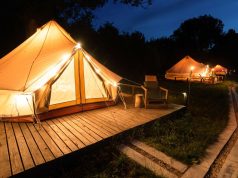Remember your last big trip? You meticulously planned it, cramming museums, landmarks, and multiple cities into a tight, action-packed itinerary. You returned home with a camera full of photos, a collection of souvenirs, and a profound sense of exhaustion. You felt like you needed a vacation from your vacation. If this sounds familiar, you’re not alone. In our hyper-connected, productivity-obsessed world, we’ve applied the same logic to our leisure time, turning travel into a checklist of destinations to be conquered rather than experiences to be savored. But what if there was another way? A way to travel that leaves you feeling restored, connected, and genuinely enriched?
Welcome to the philosophy of slow travel. It’s more than just a trend; it’s a mindset shift and a powerful antidote to the burnout of modern tourism. It’s about trading a frantic pace for a meaningful rhythm, quantity for quality, and observation for participation. This guide will explore the art and science of slow travel, showing you how to transform your journeys from a blur of sights into a collection of deeply felt moments.
What Exactly Is Slow Travel? Deconstructing the Mindset

Inspired by the Slow Food movement that began in Italy in the 1980s as a protest against fast food, slow travel champions a similar ethos. It’s not necessarily about the duration of your trip—though longer stays are common—but about your approach to the time you have. At its core, slow travel is the conscious decision to travel less and experience more.
The Core Principles of Slow Travel
- Connection over Collection: Instead of collecting passport stamps and photos of landmarks, the goal is to form genuine connections—with the local culture, the community, the natural environment, and ultimately, with yourself.
- Immersion over Itinerary: A rigid, minute-by-minute schedule is replaced with a flexible framework that allows for spontaneity. It’s about unpacking your bags and your mind, settling into a place, and letting the destination reveal itself to you.
- Sustainability over Speed: Slow travel inherently promotes more sustainable practices. By staying in one place longer, you reduce your carbon footprint from frequent flights and transfers. You’re also more likely to support small, local businesses rather than large international chains.
- Participation over Observation: It encourages you to become a temporary local. This means shopping at the neighborhood market, learning a few phrases of the language, taking a cooking class, or simply finding a favorite café to watch the world go by.
In essence, slow travel redefines the goal of a trip. The destination is no longer a finish line but a starting point for deeper exploration.
The Transformative Benefits of Traveling Slower
Adopting a slower pace might seem counterintuitive in a world that praises efficiency, but the rewards are profound and long-lasting. Here are some of the key benefits you can expect when you choose to travel deeper, not faster.
1. Alleviate Travel Burnout and Reduce Stress
The stress of traditional travel is real: tight connections, early morning alarms to beat the crowds, the pressure to “see it all.” Slow travel eliminates this frantic energy. By having fewer plans, you remove the pressure. Waking up without a strict agenda allows you to listen to your body and mind, deciding what you feel like doing each day. This relaxed pace fosters genuine rest and rejuvenation, which is the original purpose of a vacation.
2. Forge Authentic Cultural Connections
When you’re rushing through a city in 48 hours, your interactions are mostly transactional—with tour guides, hotel staff, and waiters. When you stay in a place for a week, two weeks, or a month, you start to build relationships. You become a regular at the local bakery, you chat with the shopkeeper downstairs, and you get to know the neighbors. These small, everyday interactions provide a window into the local culture that you can’t get from a museum or a guided tour.
3. It’s Often More Budget-Friendly
While it seems paradoxical, traveling for longer can often be cheaper on a per-day basis. Transportation is one of the biggest travel expenses; staying in one place drastically cuts this cost. Furthermore, opting for apartment rentals with kitchens allows you to cook some of your own meals, saving a significant amount on dining out. Accommodation providers often offer substantial discounts for weekly or monthly stays.
4. Foster Personal Growth and Self-Discovery
Constant movement and stimulation can be a way to avoid introspection. Slow travel provides the time and space for reflection. Navigating a new place on its own terms—learning the bus system, deciphering a menu, or simply being alone with your thoughts in an unfamiliar setting—builds confidence, resilience, and self-awareness. It pushes you out of your comfort zone in a gentle, sustainable way.
5. A More Responsible and Sustainable Way to Travel
By its very nature, slow travel is kinder to the planet and its people. Reducing air and train travel lowers your carbon footprint. By spending your money at local markets, independent restaurants, and artisan shops over a sustained period, you ensure that your tourist dollars directly benefit the community you’re visiting, rather than multinational corporations.
A Practical Guide: How to Plan Your First Slow Travel Adventure
Ready to give it a try? Planning a slow travel trip involves a different set of priorities. Here’s how to get started.
Step 1: The Mindset Shift – Quality Over Quantity
The first and most important step is to change your definition of a “successful” trip. Let go of the need to see everything. If you have two weeks, instead of planning a 4-country European whirlwind, choose one region, or even just one or two cities. For example, instead of “doing Italy,” choose to explore Tuscany from a home base in a small town near Florence. This focus is the foundation of your entire trip.
Step 2: Choosing Your Destination and Home Base
Look for a “base” that is liveable, not just visitable. Consider factors like:
- Good Public Transit: A location with a reliable network of buses or trains allows you to take easy, spontaneous day trips to nearby towns without the hassle and expense of renting a car.
- Neighborhood Feel: Choose a residential neighborhood just outside the main tourist core. This is where you’ll find authentic bakeries, markets, and a quieter pace of life.
- Access to Nature: Having a park, a river, or hiking trails nearby provides free and restorative activities for days when you don’t want to sightsee.
Step 3: Rethinking Accommodation
Ditch the hotel. For slow travel, your best options are vacation rentals, apartments, or homestays. Having a kitchen is a game-changer, allowing you to experience the local food culture in a new way by shopping at markets and trying your hand at local recipes. Having a living space separate from your bedroom makes your accommodation feel more like a home and less like a temporary room.
Step 4: Crafting a Flexible “Non-Itinerary”
This can be the hardest part for chronic planners. Instead of a daily schedule, create a list of possibilities or “anchor points.” These could be a few key museums you want to see, a cooking class you’ve booked, or a weekly market you want to visit. The days in between are left open for discovery. See a poster for a local concert? Go. Hear about a beautiful village from your baker? Take a day trip. The magic of slow travel lies in these unplanned moments.
On the Ground: Tips for Living Like a Local

Once you’ve arrived, the focus shifts to daily practices that foster immersion.
- Establish a Routine: It may sound boring, but a simple routine helps you feel grounded. Start your day by going to the same café for coffee. Take an evening walk through the same park. This repetition builds familiarity and opens the door for casual interactions.
- Learn the Language (Even a Little): You don’t need to be fluent, but learning basic greetings like “hello,” “goodbye,” “please,” and “thank you” in the local language shows respect and can transform your interactions with people.
- Walk Everywhere: The best way to understand the fabric of a place is on foot. You’ll discover hidden alleyways, charming shops, and beautiful details that you would miss from a taxi or a tour bus.
- Embrace the Art of Doing Nothing: Find a park bench or a piazza, and just sit. Watch people go about their daily lives. Listen to the sounds of the city. This is not wasted time; it’s an act of deep observation and connection.
Your Next Journey, Reimagined
Slow travel isn’t an exclusive club for retirees or long-term digital nomads. It’s an accessible philosophy that can be applied to any trip, whether it’s a weekend getaway or a year-long sabbatical. It’s a conscious choice to step off the tourism treadmill and engage with the world in a more deliberate, meaningful, and rewarding way.
So for your next adventure, challenge yourself. Instead of asking, “How much can I see?” ask, “How deeply can I experience this one place?” Unpack your suitcase, put away the checklist, and allow yourself to simply be. You might just find that the most memorable souvenirs you bring home are not things you can hold, but the connections you’ve made and the peace you’ve found.
Find the best spots in our Thriving as a Digital Nomad in Southeast Asia.









